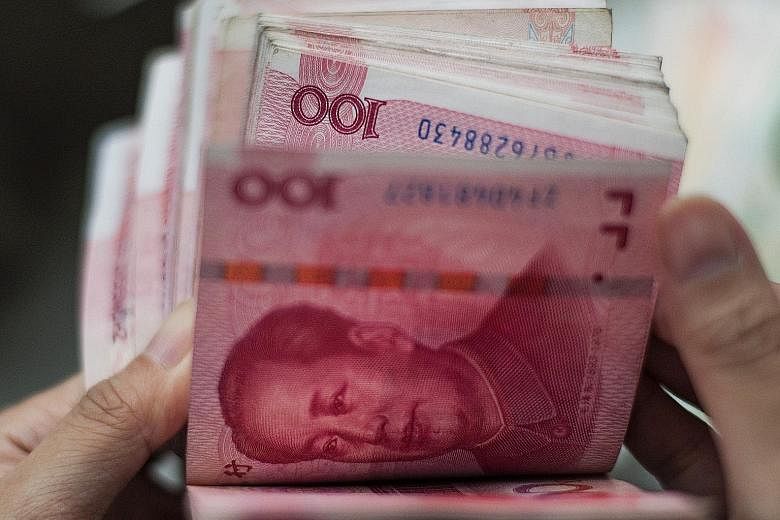HONG KONG • The yuan took on the mantle of a global reserve currency yesterday, a milestone that is seen breathing life into China's bond markets by prompting estimated inflows of as much as US$1 trillion (S$1.4 trillion) over the next five years.
The currency's entry into the International Monetary Fund's (IMF's) Special Drawing Rights (SDR) - alongside the dollar, euro, pound and yen - comes amid China's efforts to boost its international usage and ambitions of providing an alternative to the dollar.
Describing the inclusion as a "historic milestone", IMF managing director Christine Lagarde said in a statement on Friday that it reflects the progress that the Asian country has made in reforming its financial systems and liberalising markets.
"SDR entry will pave the way for closer interaction between China's capital market and that of the rest of the world," Mr Tommy Xie, an economist at Oversea-Chinese Banking Corporation in Singapore, said yesterday.
"The first impact will be on the yuan, which the authorities are likely to keep stable for the next few weeks as any sudden volatility spike will damp the yuan's image."
While an IMF statement on Friday said the yuan has been deemed freely usable, China has been suspected of meddling in the foreign exchange market after a shock devaluation in August last year rattled investor confidence.
It has been seen intervening heavily even offshore - driving yuan interbank rates to more than 20 per cent in Hong Kong - and clamping down on capital flows. The median estimate in a Bloomberg survey is for the Chinese currency to decline 1.1 per cent the rest of this year to 6.75 per dollar.
United States Treasury Secretary Jack Lew said on Thursday that the yuan was "quite a ways" from true global reserve currency status.
The new IMF status recognises the "enormous" change in China in the last 10 years that had made the yuan more open, but Beijing still had work to do to make its currency and its economy more market-driven, he said. "Being part of the SDR basket at the IMF is quite a ways from being a global reserve currency," he said.
The yuan's addition is the first change to the SDR basket since 1999, when the euro replaced the Deutsche mark and French franc.
The new weightings will be 41.73 per cent for the dollar, 30.93 per cent for the euro, 10.92 per cent for the yuan, 8.33 per cent for the yen and 8.09 per cent for the pound.
There were 204.1 billion SDRs allocated to IMF members as of March, equivalent to around US$285 billion, compared with about US$11 trillion of global reserves.
The basket, created in 1969, gives IMF member countries who hold it the potential right to obtain any of the currencies in the basket to meet balance-of-payments needs. Inclusion could be a catalyst for central banks and sovereign wealth funds to shift funds into the yuan.
The Chinese currency constituted 1.1 per cent of official reserves in the latest IMF survey, compared with 63.7 per cent for the dollar.
BLOOMBERG, REUTERS

